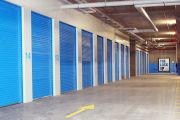
Investors sell $30m hotel to NSW government, spend windfall on Haymarket building
A private investment firm has paid $14.65 million for a commercial building in Sydney’s Haymarket, months after selling a heritage-listed Surry Hills hotel to the state government, which plans to knock it down and build a new entrance to Central Station.
Fuqiang Investments Pty Ltd bought the three-storey property at 810-812a George Street, Haymarket, on a 1.5 per cent net yield.
The group became the owners of Bounce Hotel, not far away at 20-28 Chalmers Street, Surry Hills, after buying it for $18.3 million in September 2015.
They then sold the the four-storey building for $29.8 million in December 2017 to Transport for NSW, which will demolish it to make way for the eastern entry to Central Walk in early 2019. The new underground concourse will act as a direct interchange connecting Central Station to Surry Hills and the future CBD and South East Light Rail.
A spokesperson for Sydney Metro said the entry would run under Chalmers Street into Central Station linking Sydney Trains platforms 16 to 23 and would provide escalator access directly to suburban platforms for the first time.
The Chalmers Street entry is expected to be completed in the second half of 2022 and will be about two storeys high – similar in height and scale to the adjacent Sydney Dental Hospital building annex.
There is future potential for development above the entry, which would not be part of Central Walk, though such plans, if given the green light, would be years away.
Sources said that Fuqiang Investments want to redevelop the Haymarket site into short-term accommodation, potentially similar to Bounce Hostel. Bounce Hostel has been contacted for comment.
The Haymarket building was sold by a private family, who had held the property for 45 years through the company Z Stein Pty Ltd.
CBRE agent Gemma Isgro, who sold the property with Nicholas Heaton, said the family wanted to sell as the building needed significant capital for any upgrades or redevelopment.
“They’re not developers, it’s better to capitalise on the market and let a developer come in and pay a premium to do it as it’s something they wouldn’t do themselves,” she said.
“The market is strong for that type of product (underdeveloped sites) and they decided that now is the right time to sell for them.”
The agents received 15 offers for the site, which has a height limit of 50 metres, or about 15 storeys.
The building was home to one of Sydney’s early Aboriginal organisations, the Foundation for Aboriginal Affairs, during the 1960s.
The activist group partly drove the success of the landmark 1967 referendum, in which Indigenous Australians were included in the census for the first time. It also provided the local Aboriginal community with food, housing assistance, scholarships and legal aid.
Funding cuts forced the organisation to close in 1977.













